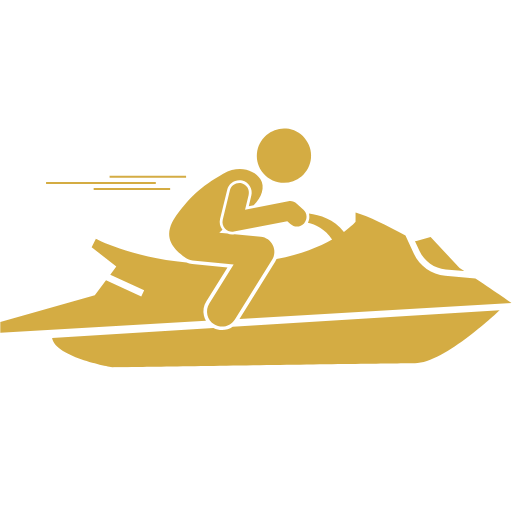FAQs
Construction work is risky—and employers must protect their crew. If you’re injured:
- Report it immediately to your supervisor.
- Seek medical attention. Your health comes first.
- Document everything. Take photos of the site, your injury, and any equipment involved.
- Get witness statements if possible.
- Call a lawyer. Especially if the injury was due to faulty equipment, poor safety protocols, or third-party negligence.
🛠️ You may be entitled to workers’ comp and a personal injury lawsuit, especially if another company (not your employer) caused your injury.
Falls are one of the most common causes of death in construction—OSHA knows it, and so do we.
Marko Law has fought for injured construction workers across Michigan. We’ll handle the legal load so you can focus on healing.
Multiple parties share responsibility for ensuring safety on a construction site in Michigan, including:
- Employers: Employers have a legal duty to provide a safe work environment for their employees and subcontractors. This includes implementing safety protocols, providing training, and ensuring that proper safety equipment is available and used.
- General contractors: General contractors oversee construction projects and are responsible for coordinating safety efforts, enforcing safety policies, and addressing hazards on the job site.
- Subcontractors: Subcontractors are responsible for the safety of their employees and must comply with safety regulations and protocols established by the general contractor and employer.
- Property owners: Property owners have a duty to ensure that their premises are safe for workers and visitors, including contractors and subcontractors working on-site.
If you're injured in a construction accident in Michigan due to someone else's negligence or wrongdoing, you may be entitled to various types of compensation for your injuries and losses. These may include:
- Medical expenses: Compensation for past and future medical treatment related to your injuries, including hospital bills, surgeries, medications, rehabilitation, and assistive devices.
- Lost wages: Reimbursement for income lost due to missed work days, reduced earning capacity, or disability resulting from the accident.
- Pain and suffering: Compensation for physical pain, emotional distress, and mental anguish caused by the accident and your injuries.
- Disability or disfigurement: Additional compensation for permanent disabilities, scarring, or disfigurement resulting from the accident.
- Loss of enjoyment of life: Compensation for the loss of enjoyment of activities and pursuits you enjoyed before the accident.
Preventing construction accidents in Michigan requires a proactive approach to safety and risk management. Some steps you can take to prevent construction accidents include:
- Conducting regular safety training and education for workers on hazard recognition, safe work practices, and proper use of personal protective equipment (PPE).
- Implementing and enforcing strict safety protocols and procedures, including fall protection measures, equipment inspections, and job hazard analyses.
- Providing adequate supervision and oversight to ensure compliance with safety regulations and best practices.
- Maintaining a clean and organized work environment to minimize slip, trip, and fall hazards and prevent clutter-related accidents.
- Conducting regular inspections of equipment, machinery, and tools to identify and address potential defects or maintenance issues.
- Encouraging open communication and reporting of safety concerns or near-miss incidents to identify and address hazards proactively.
Look for a lawyer with experience handling serious injury cases, a track record of successful verdicts and settlements, and a willingness to fight for your rights. Ask your lawyer: When was the last time you tried a case in front of a jury? Make sure the lawyer has extensive experience with your type of case. Many bill-board attorneys focus on volume, trying to get as many clients as possible and settling quickly. Make sure your attorney will give your case the special attention it deserves.
If you're injured in a construction accident in Michigan, it's crucial to take the following steps to protect your health and legal rights:
- Seek medical attention: Your health and safety should be your top priority. Seek prompt medical attention for your injuries, even if they seem minor at first.
- Report the accident: Notify your employer or the person in charge of the construction site about the accident and your injuries as soon as possible.
- Document the scene: If possible, take photos or videos of the accident scene, including any hazards or conditions that may have contributed to the accident.
- Get witness information: Obtain contact information from any witnesses to the accident who may be able to provide testimony or support your claim.
- Preserve evidence: Preserve any physical evidence related to the accident, such as damaged equipment, clothing, or documentation of your injuries and medical treatment.
Construction sites in Michigan are subject to various federal and state safety regulations designed to protect workers from hazards and prevent accidents. Some key safety regulations that apply to construction sites in Michigan include:
- Occupational Safety and Health Administration (OSHA) regulations: OSHA sets forth standards for workplace safety and health, including regulations specific to the construction industry, such as those related to fall protection, scaffolding, electrical safety, and hazard communication.
- Michigan Occupational Safety and Health Administration (MIOSHA) regulations: MIOSHA is Michigan's state-level occupational safety and health agency, responsible for enforcing workplace safety standards and regulations. MIOSHA adopts and enforces OSHA standards and may also have additional state-specific regulations.
- Construction safety standards: These standards address various aspects of construction site safety, including personal protective equipment (PPE), hazard communication, excavation safety, and equipment safety.
The statute of limitations for filing a serious injury claim varies depending on the jurisdiction and the nature of the injury. In some cases, you may have only a few months to file a claim. If you are a resident of Michigan, the statute of limitations for filing a serious injury claim may vary depending on the nature of the injury and the circumstances of the case. In Michigan, the general statute of limitations for personal injury claims is three years from the date of the injury. This means that if you were seriously injured due to someone else's negligence, you generally have three years from the date of the injury to file a claim for compensation. However, it's important to note that there may be exceptions to this general rule. For example, if the injury was caused by medical malpractice, you may have only two years from the date you discovered the injury or should have discovered it through reasonable diligence to file a claim. Additionally, if the injury was caused by a government entity or employee, you may be required to file a notice of claim within a much shorter time frame, often as little as 60 or 90 days. Given the complexities of the statute of limitations and the legal process for filing a serious injury claim, it's always a good idea to consult with an experienced personal injury attorney as soon as possible after the injury occurs. Marko Law Firm can help you understand your rights and obligations, navigate the legal process, and work to ensure that you receive the compensation you deserve.
In Michigan, most employers are required to carry workers' compensation insurance to provide benefits to employees who are injured on the job, including construction workers. However, if your employer doesn't have workers' compensation insurance or fails to provide coverage as required by law, you may still have options for seeking compensation for your injuries.In cases where your employer is uninsured or underinsured for workers' compensation, you may be able to pursue compensation through alternative means, such as:
- Personal injury lawsuit: You may have grounds to file a personal injury lawsuit against your employer or another party responsible for your injuries to seek compensation for your medical expenses, lost wages, pain and suffering, and other losses.
If you were injured due to defective equipment or machinery on a construction site in Michigan, you may have grounds for a product liability claim against the manufacturer, distributor, or seller of the defective product. Product liability claims typically involve proving that:
- The product was defective in design, manufacture, or warning.
- The defect caused your injury while the product was being used as intended or for its foreseeable purpose.
To support a construction accident claim in Michigan, you will need various types of evidence to establish liability and damages. This evidence may include:
- Documentation of the accident scene, including photographs, videos, and sketches.
- Witness statements from coworkers, supervisors, bystanders, and other individuals who observed the accident.
- Accident reports filed with your employer, the construction site owner, or relevant authorities.
- Medical records documenting your injuries, treatment received, and prognosis.
- Employment records, including timecards, pay stubs, and personnel files.
- Inspection reports, maintenance records, and safety logs related to equipment, machinery, and work conditions.
Construction accidents can result in a wide range of injuries, ranging from minor cuts and bruises to severe, life-threatening injuries. Some of the most common types of injuries sustained in construction accidents in Michigan include:
- Fractures and broken bones: Falls, being struck by objects, and caught-in or between accidents can cause fractures and broken bones, which may require surgery and rehabilitation.
- Traumatic brain injuries (TBIs): Falls, being struck by objects, and vehicle accidents can result in TBIs, leading to cognitive impairment, memory loss, and other long-term complications.
- Spinal cord injuries: Falls from heights or being struck by heavy objects can cause spinal cord injuries, resulting in paralysis or loss of sensation and motor function.
- Burns and electrocutions: Contact with live electrical wires, fires, explosions, or chemical exposure can cause severe burns and electrocution injuries.
- Amputations: Accidents involving heavy machinery or equipment can result in traumatic amputations of limbs or digits.
- Soft tissue injuries: Sprains, strains, and other soft tissue injuries can occur due to overexertion, repetitive motion, or sudden impacts.
Construction sites are inherently dangerous environments, and accidents can occur due to various factors. Some common causes of construction accidents in Michigan include:
- Falls from heights: Falls are one of the leading causes of construction-related injuries and fatalities. They can occur from ladders, scaffolding, roofs, or other elevated surfaces.
- Struck-by accidents: Workers may be struck by falling objects, moving equipment, or vehicles on the construction site.
- Caught-in or between accidents: Workers can get caught in or between heavy machinery, equipment, or structures, leading to crushing injuries or suffocation.
- Electrocution: Contact with live electrical wires or faulty equipment can result in severe electrical burns or electrocution.
- Slip and trip hazards: Uneven surfaces, debris, spills, and inadequate lighting can contribute to slip and trip accidents on construction sites.
- Equipment malfunctions: Defective or improperly maintained machinery and equipment can malfunction, leading to accidents and injuries.
Construction sites are known for their inherent risks and potential for serious injuries. Common causes of serious injuries at construction sites include: Falls: Falls from heights, such as scaffolding, ladders, roofs, and elevated platforms, are one of the leading causes of serious injuries at construction sites. They can result in fractures, head injuries, spinal cord injuries, and even fatalities. According to the National Safety Council (NSC), falls are among the top preventable injuries. Struck-By Accidents: These accidents occur when a worker is struck by a moving object or equipment. Falling tools, equipment malfunctions, and vehicle collisions are examples of struck-by accidents that can lead to serious injuries. Electrocutions: Exposure to live electrical currents can cause severe burns, cardiac arrest, and other life-threatening injuries. Electrical accidents can happen when workers come into contact with live wires, faulty equipment, or unsafe wiring conditions. Caught-In or Caught-Between Accidents: These accidents involve a worker being caught, crushed, or trapped between equipment, machinery, or structures. Trench collapses, cave-ins, and getting caught in machinery are examples of caught-in or caught-between accidents. Strains and Sprains: Lifting heavy objects, repetitive movements, and poor ergonomics can lead to strains, sprains, and musculoskeletal injuries. These injuries are common among construction workers and can result in chronic pain and disability. Machinery Accidents: Operating heavy machinery and equipment poses risks if proper training and safety precautions are not followed. Machinery malfunctions, lack of training, and failure to use safety features can lead to serious injuries. Chemical Exposure: Exposure to hazardous chemicals and substances on construction sites can cause chemical burns, respiratory problems, and long-term health effects. Proper handling, storage, and use of chemicals are essential to prevent injuries. Collapses: Structural collapses of buildings, scaffolding, trenches, or walls can cause catastrophic injuries or fatalities. Inadequate support, unstable structures, and failure to follow safety protocols contribute to these incidents. Vehicle Accidents: Construction sites involve the movement of various vehicles, including trucks, forklifts, and heavy equipment. Collisions involving vehicles can lead to serious injuries for workers and pedestrians. Tool and Equipment Malfunctions: Defective tools and equipment can malfunction, causing serious injuries to workers. Regular maintenance and inspections are crucial to ensuring the safe operation of tools and equipment. To prevent serious injuries at a construction site, it's important to prioritize safety measures, follow established protocols, and stay vigilant to potential hazards. Source: National Safety Council (NSC)
- Preventable Deaths: Top 10 Causes by Age Group
Like Marko Law, most personal injury lawyers work on a contingency fee basis, meaning they don't charge upfront fees and only get paid if you win your case. This fee is typically a percentage of your settlement or verdict. This is called the “No Fee Guarantee”.
In Michigan, the statute of limitations for filing a personal injury claim, including construction accident claims, is generally three years from the date of the accident or injury. However, there are some exceptions and nuances to the statute of limitations that may affect the deadline for filing a claim.
It's essential to consult with an experienced personal injury attorney as soon as possible after a construction accident to understand the applicable statute of limitations and ensure that you file your claim within the required time frame. Failing to file a claim before the statute of limitations expires can result in the loss of your right to seek compensation for your injuries and losses.
Fault in a construction accident case in Michigan is typically determined by establishing negligence, which involves proving the following elements:
- Duty of care: The defendant owed a duty of care to the plaintiff to act reasonably and prevent foreseeable harm.
- Breach of duty: The defendant breached their duty of care by failing to exercise reasonable care or by engaging in negligent conduct.
- Causation: The defendant's breach of duty directly caused or substantially contributed to the plaintiff's injuries.
You can prevent serious injuries by wearing appropriate safety gear, following safety guidelines in the workplace, driving defensively, and staying aware of your surroundings.
Preventing serious injuries at a construction site requires a combination of awareness, proper training, and adherence to safety guidelines. Here are some key steps to help prevent serious injuries: Wear Appropriate Safety Gear: Use personal protective equipment (PPE) such as helmets, gloves, safety goggles, and steel-toed boots to minimize the risk of injuries from falling objects, impacts, and hazards. Follow Safety Guidelines: Adhere to established safety protocols, guidelines, and best practices for each task. This includes proper use of equipment, machinery, and tools, as well as following lockout/tagout procedures and confined space entry protocols. Drive Defensively: If vehicles are used on the construction site, practice defensive driving techniques to avoid collisions. Stay alert, obey speed limits, and use designated routes for vehicles. Stay Aware of Surroundings: Be aware of your surroundings and potential hazards. Avoid distractions and stay focused on the task at hand to prevent accidents. Receive Proper Training: Ensure that all workers are properly trained to operate equipment, handle hazardous materials, and perform tasks safely. Ongoing training and refresher courses are essential. Use Fall Protection: When working at heights, use fall protection equipment such as harnesses, lifelines, and guardrails to prevent falls. Follow proper procedures for setting up scaffolding and ladders. Properly Maintain Equipment: Regularly inspect and maintain tools, machinery, and equipment to ensure they are in good working condition. Address any defects or malfunctions promptly. Avoid Shortcuts: Avoid taking shortcuts or bypassing safety measures to save time. Cutting corners can lead to accidents and injuries. Report Hazards: If you identify potential hazards or unsafe conditions, report them to supervisors or safety personnel immediately. Prompt action can prevent accidents from occurring. Promote a Safety Culture: Foster a culture of safety on the construction site by encouraging open communication about safety concerns and rewarding safe practices. Safety should be a collective responsibility. By implementing these safety measures, workers and employers can significantly reduce the risk of serious injuries at construction sites. It's essential to prioritize safety at all times to protect the well-being of everyone on the site. Sources: American Academy of Family Physicians (AAFP)
- Preventing and Treating Burns: A Guide for Caregivers ; Mayo Clinic
- First Aid for Electrical Burns
An attorney can provide significant assistance following a construction accident by: Investigating the Accident: They will conduct a thorough investigation to determine liability and gather evidence to support your case.
Navigating Workers' Compensation: Attorneys can help you file a workers' compensation claim to cover medical expenses and lost wages.
Pursuing Third-Party Claims: If a third party (e.g., equipment manufacturer) is responsible, an attorney can pursue additional compensation through a personal injury lawsuit.
Ensuring Compliance: They ensure that your claim complies with all relevant laws and regulations, avoiding delays and denials.
Negotiating Settlements: Attorneys negotiate with insurance companies and liable parties to secure a fair settlement for your injuries and losses.
For detailed assistance, contact Marko Law today.
A construction accident attorney can provide invaluable assistance and support throughout the legal process, including:
- Conducting a thorough investigation of the accident to gather evidence and establish liability.
- Consulting with medical experts, accident reconstruction specialists, and other professionals to assess the extent of your injuries and damages.
- Negotiating with insurance companies and defense attorneys to pursue a fair settlement on your behalf.
- Representing you in court and advocating for your rights and interests at trial if necessary.
Yes, you may have grounds to sue someone other than your employer for a construction accident in Michigan under certain circumstances. While workers' compensation typically covers employees injured on the job regardless of fault, there are situations where third-party liability may exist. For example:
- If your injury was caused by the negligence of a subcontractor, supplier, equipment manufacturer, or property owner not affiliated with your employer.
- If a defective product or piece of equipment contributed to your accident, you may have a product liability claim against the manufacturer.
Yes, if you're injured in a construction accident while working in Michigan, you may be eligible to receive workers' compensation benefits regardless of who was at fault for the accident. Workers' compensation provides medical benefits and wage replacement to employees who are injured or become ill on the job, including construction workers.Workers' compensation benefits may cover:
- Medical expenses: Payment for necessary medical treatment, including doctor visits, hospitalization, surgery, medications, and physical therapy.
- Wage replacement: Compensation for a portion of your lost wages if you're unable to work due to your injuries.
- Vocational rehabilitation: Assistance with job training, education, or placement services if you're unable to return to your previous job due to your injuries.
In some cases, you may still be able to receive compensation for your injuries even if you were partially at fault. This is known as comparative negligence. In Michigan, your total recovery may be reduced by your percentage of fault.
Yes, if you're injured in a construction accident in Michigan, you may be entitled to compensation for pain and suffering, which refers to the physical and emotional distress caused by your injuries and their impact on your life. Pain and suffering damages are considered non-economic damages and may include:
- Physical pain and discomfort resulting from your injuries.
- Emotional distress, such as anxiety, depression, and post-traumatic stress disorder (PTSD).
- Loss of enjoyment of life due to the limitations imposed by your injuries.
Yes, if you're injured in a construction accident in Michigan due to someone else's negligence or wrongdoing, you may be eligible to file a personal injury lawsuit to seek compensation for your injuries and losses. To have grounds for a lawsuit, you typically need to demonstrate that:
- The party responsible for your injuries owed you a duty of care (e.g., your employer, a subcontractor, or a property owner).
- The party breached their duty of care by failing to take reasonable precautions to prevent the accident or injuries.
- The breach of duty directly caused your injuries.
Yes, working at heights presents significant risks on construction sites, and specific safety measures are essential to prevent falls and protect workers' safety. Some key safety measures for working at heights on construction sites in Michigan include:
- Providing fall protection equipment such as harnesses, lanyards, and lifelines for workers at elevated work areas.
- Installing guardrails, safety nets, or toe boards around open edges and floor openings to prevent falls.
- Using scaffolding, aerial lifts, or elevated work platforms with proper guardrails and secure footing.
- Ensuring that ladders are in good condition, properly secured, and used according to manufacturer guidelines.
- Implementing a comprehensive fall protection program that includes training, hazard assessments, and rescue procedures.
- Conducting regular inspections of fall protection systems and equipment to identify and address potential hazards or defects.
Yes, Michigan law imposes certain limitations on the damages you can recover in a construction accident lawsuit, including:
- Economic damages: Economic damages, such as medical expenses, lost wages, and property damage, are typically not subject to statutory limitations.
- Non-economic damages: Non-economic damages, such as pain and suffering, emotional distress, and loss of consortium, are subject to a statutory cap or limit in Michigan.

Other Practice Areas
Tell us about your legal situation today.
Marko Law Will Give You A Voice
At Marko Law, we don’t just take cases — we take a stand. Whether you're facing an injury, injustice, or outright negligence, our team fights like it’s personal — because to you, it is.
- Over $500 Million recovered for our clients
- Proven track record in civil rights, personal injury & workplace justice
- Free, confidential consultations — you don’t pay unless we win
- Based in Detroit, trusted across Michigan
Ready to make your voice heard?
We’re not here to play games. We’re here to win.


.png)
















.png)




.png)



.png)








